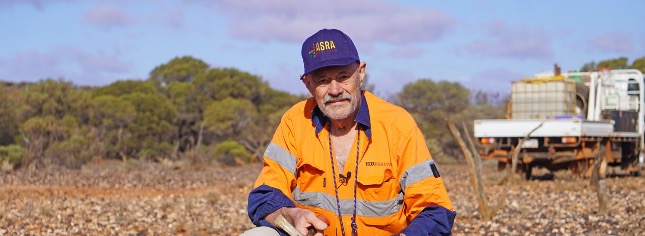Asra Minerals Limited (ASX: ASR) has obtained further “exciting” Rare Earth Element (REE) results from 113 drill holes resulting in significant REE occurrences together with critical mineral, Scandium (Sc) at the company’s Yttria regolith-hosted discovery at its Mt Stirling Project, located in the Eastern Goldfields of Western Australia.
“There is little doubt as to the complexity of an understanding of REE’s. We have espoused in the past as to the uniqueness of ASRA’s REE discovery, the lack of Thorium and Uranium, the regolith and shallow nature of the REE occurrences and the very high ratio of HREO to TREO so far unmatched. However, the learning process continues as without an economic liberation of REE’s the uniqueness of the occurrences means little,” Asra Executive Chairman, Paul Summers, said.
“Unlike some discoveries being announced in the elevated hunt for REE’s, ASRA has been very open with its entire data, revealing the extent and geochemical variability of its discovery, the path it has taken, and the direction forward.
“The past months have seen an extended period of gathering and understanding of data of which the new geological team have worked very hard to achieve and have arrived at an exciting turning point for the company.”
Three milestones have been determined that provide ASRA with a definitive and positive path forward:
1. Yttria is a regolith hosted, ionic REE deposit. Non-radioactive and potentially with a low CAPEX requirement, ionic clays are also the only type of deposit that contains important quantities of both light and heavy rare earth elements.
Only a handful of companies are currently making strides in exploring and developing ionic clay assets outside of China and Myanmar. Ionic Rare Earths’ (ASX: IXR) Makuutu project in Uganda is among them with current mineral resource estimate of 532mt at 640ppm TREO, at a cut-off grade of 200ppm TREO-cerium-oxide.
There are significant project and cost advantages associated with ionic clay projects like Yttria compared to the more common hard rock REE projects.
2. The role of Cerium (Ce) during regolith oxidation
3. The presence of Sc throughout the entire regolith drilled so far has revealed values up to 174ppm Sc2O3 with a present average 74ppm. These numbers indicate that Sc occurs at economic levels throughout the entire regolith profile at Yttria. Sc’s primary historical use has been as a super alloy to strengthen aluminum and protect it against corrosion. A small amount of Sc increases aluminum strength exponentially. Although Sc’s primary use has been as an alloy with aluminum, solid oxide fuel cells are becoming an emerging growth area as are lightweight electric vehicles. Growing technology for storing energy and potential applications in the automotive industry will likely create opportunities for the market in the coming years.
Traditionally Scandium production has been limited in line with limited access to this resource, but the Sc market is expected to register a CAGR of over 10% by 2027.
These advances in ASRA’s understanding of its Mt Stirling REE project provides great confidence with our re-focus on metallurgy and the science of liberation of REE’s and critical minerals.
For further information please visit: https://asraminerals.com.au/












